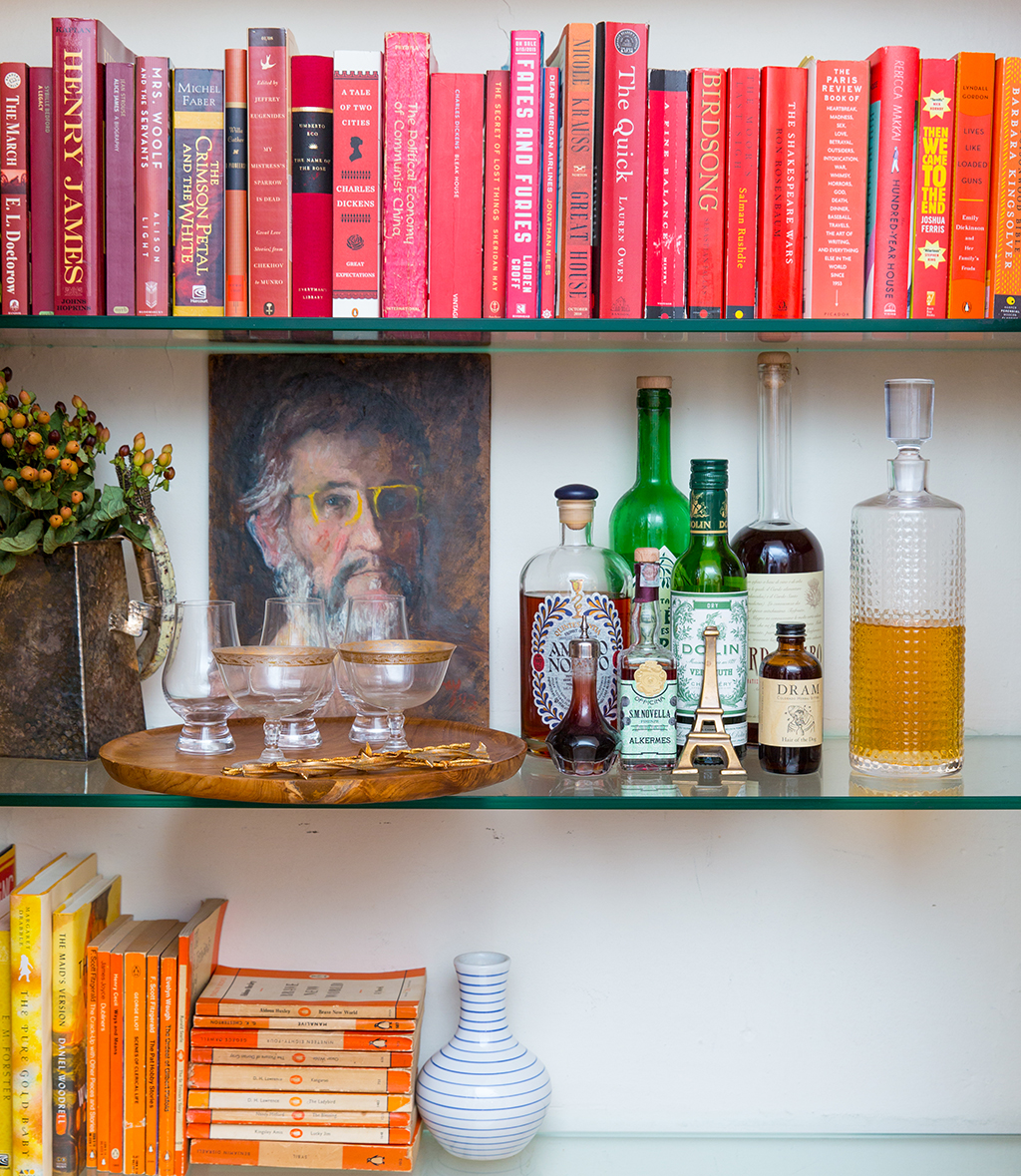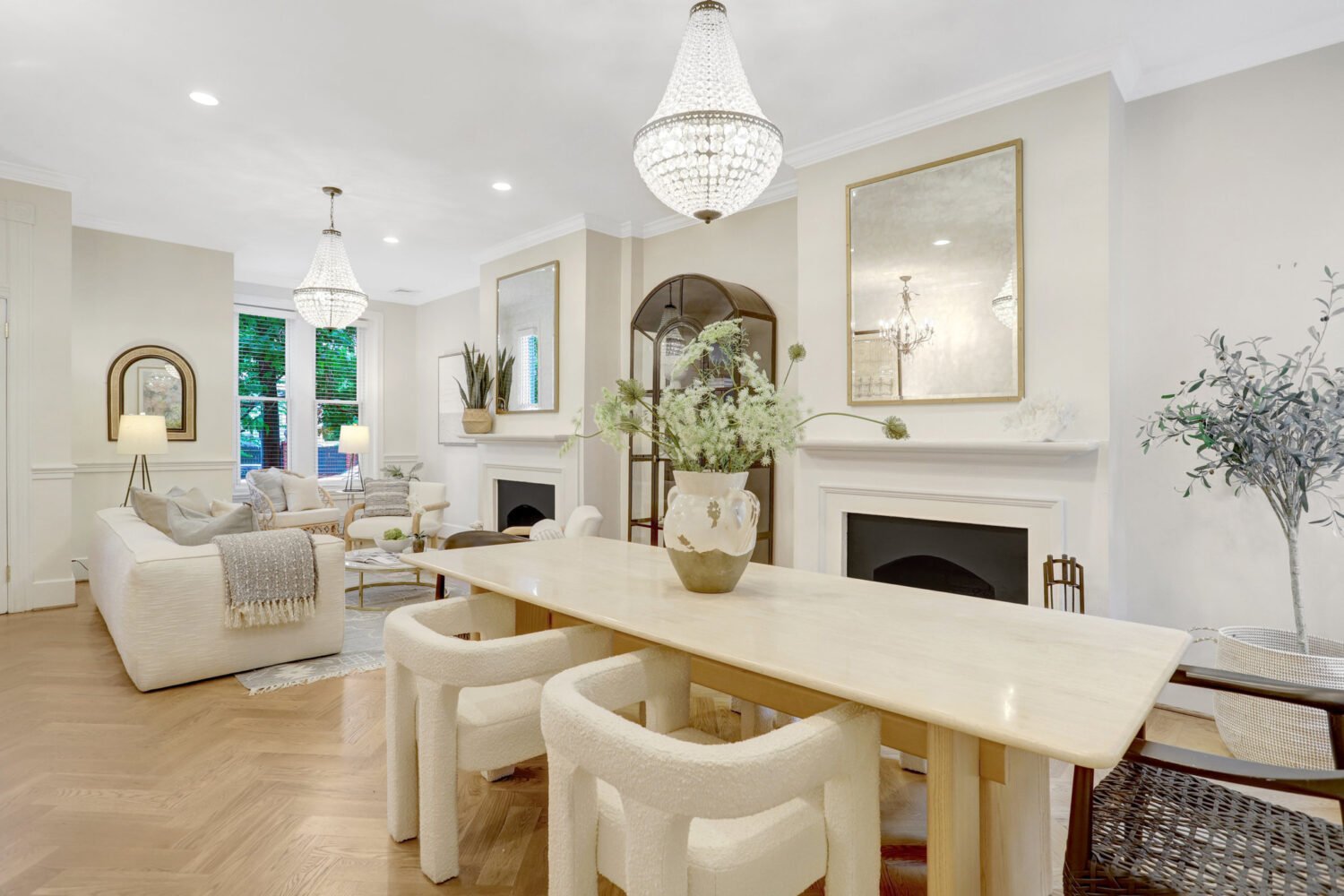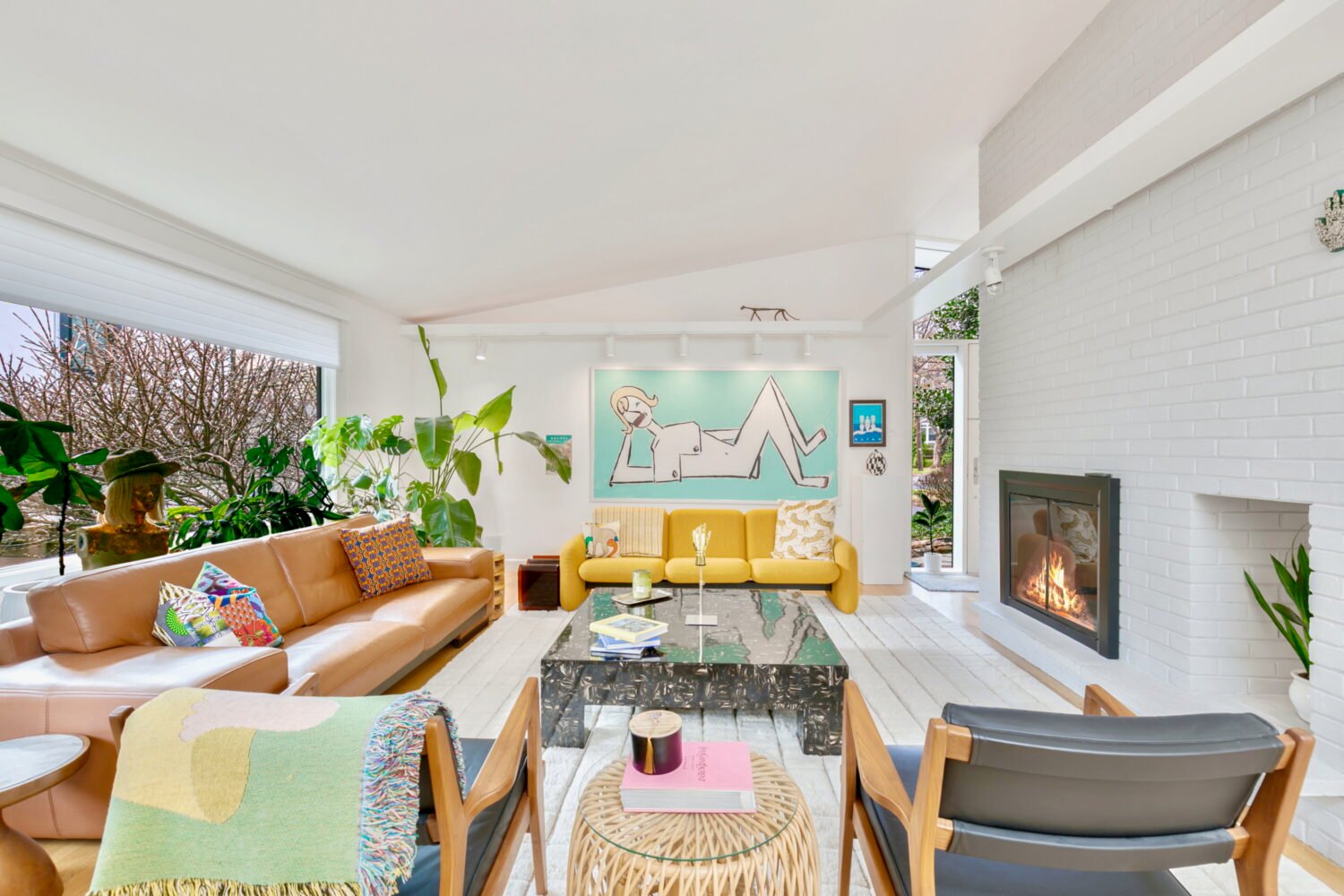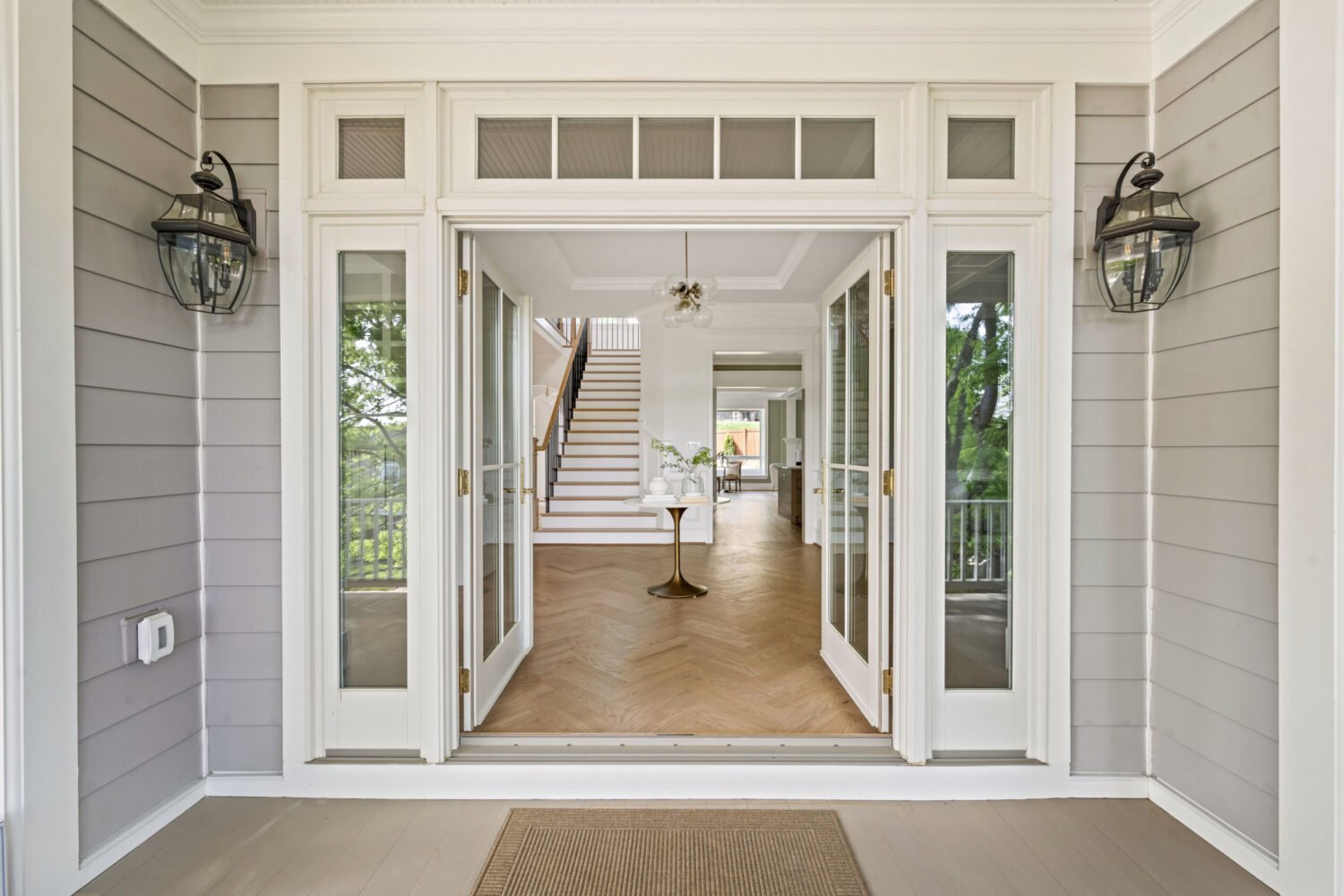There’s a prevailing school of thought in the organizational world—thanks mostly to celebrity declutterer/author Marie Kondo and her “Konverts”—that the only way to truly get your life in order is to purge, purge, purge.
It’s a hopeful idea, really, that you could simply trash-bag your way to clutter-free bliss. But unless your aesthetic is Buddhist Monk Chic, the detritus of human life will always crowd your countertops and jam your drawers. Plus, some of us actually like to surround ourselves with the little objects and totems that years of collecting have brought into our homes.
Another, perhaps more realistic, solution is to carve out niches for the activities that cause clutter to accumulate. Morning-coffee materials always spread out across the kitchen? Set up a breakfast station. Piles of old mail threatening to submerge your office? Put a wastebasket by the door. Then add some character so these nooks feel pleasant, not utilitarian.
Below, I tidied up six clutter-prone spaces in my 800-square-foot Logan Circle apartment, then asked local professional organizer Erin Rooney Doland to evaluate how I did. She pointed out both the highlights and the shortfalls and offered tips, tricks, and tools you can use to manage the things you don’t want banished to the dustbin.
1. Bookshelf Minibar
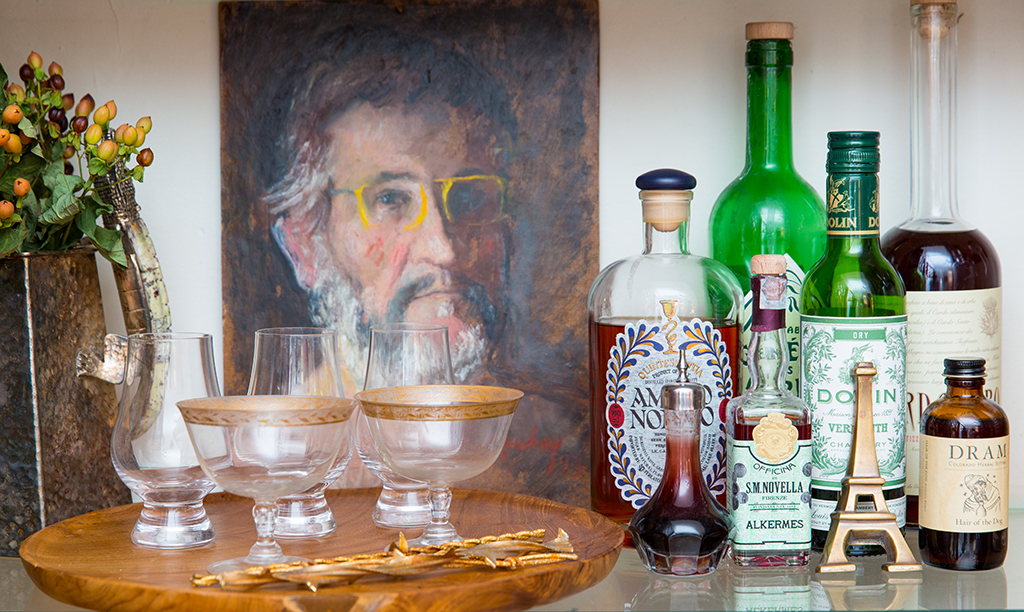
Color coding: Organizing books by spine color is beautiful—and makes it easier to return books to their storage space after use, says Doland.
Double-duty decor: The Eiffel Tower bottle opener, a utilitarian object disguised as a piece of decor, is a good choice for a small space.
2. Nightstand
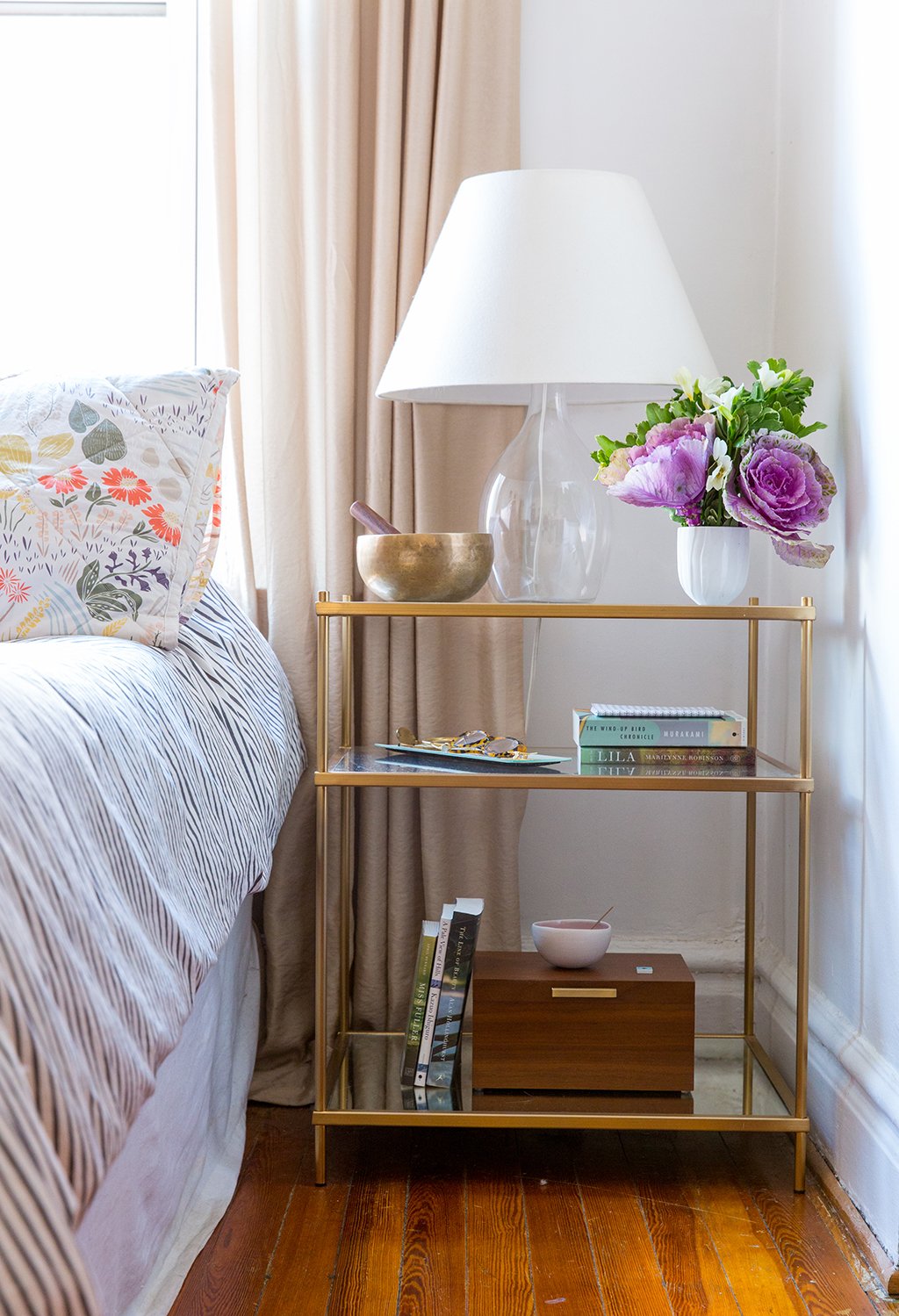
Dysfunctional furniture: A nightstand with drawers would be a better choice for stashing personal items near the bedside. But, says Doland, at least having shelving helps.
Spatial awareness: Doland recommends organizing a nightstand while in bed. Put necessary items in easier-to-reach spots and decorative items (such as the gold bowl) farther away.
3. Front-Door Storage
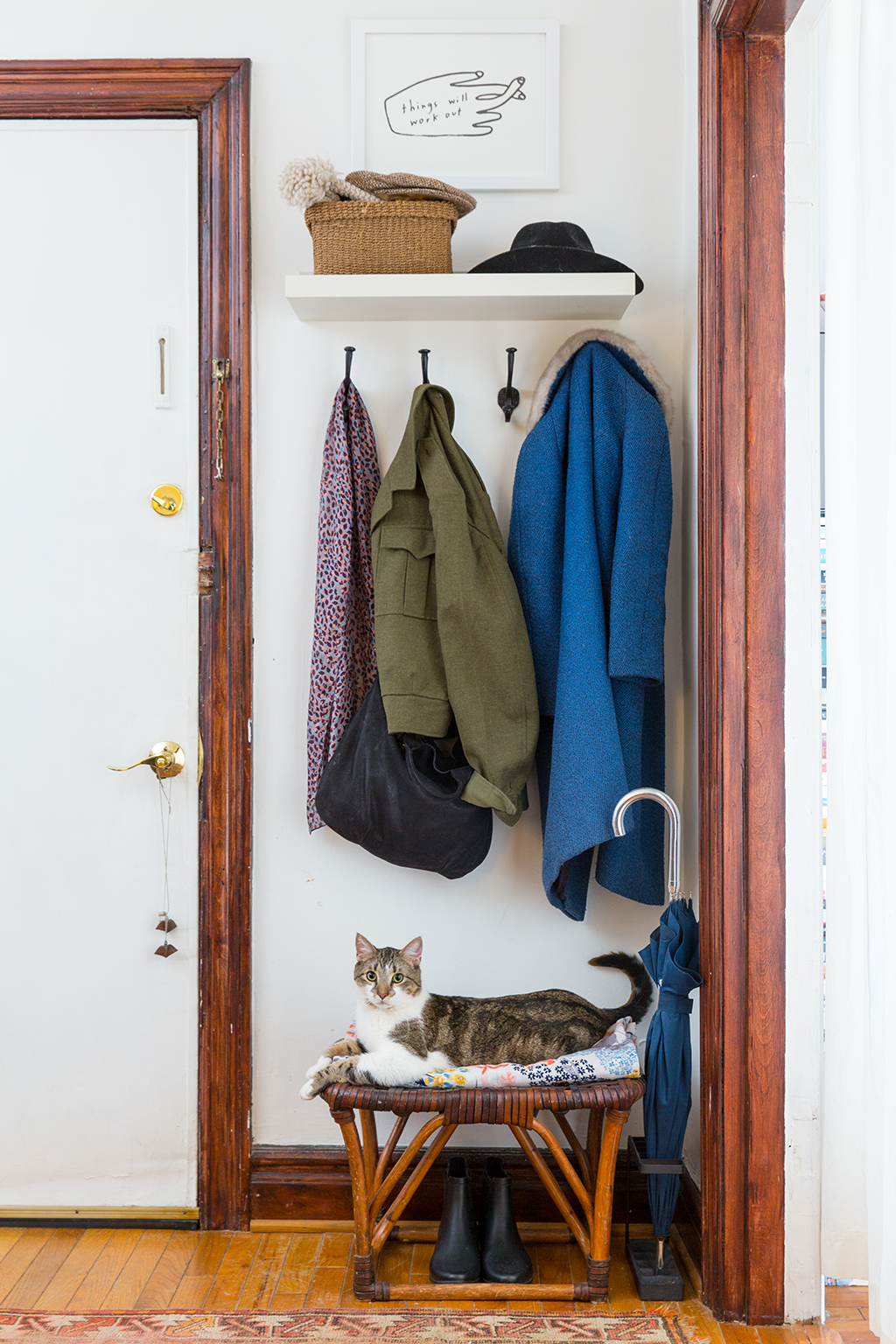
Take a load off: The bench provides a cubby for shoes, a place to rest your bag when taking off your coat, and somewhere to sit for shoe removal.
Bits and bobs: Doland likes baskets for holding smaller items—gloves, dog leashes, lint rollers—to reduce visual clutter but still keep items near where they’re needed.
4. Entryway Storage
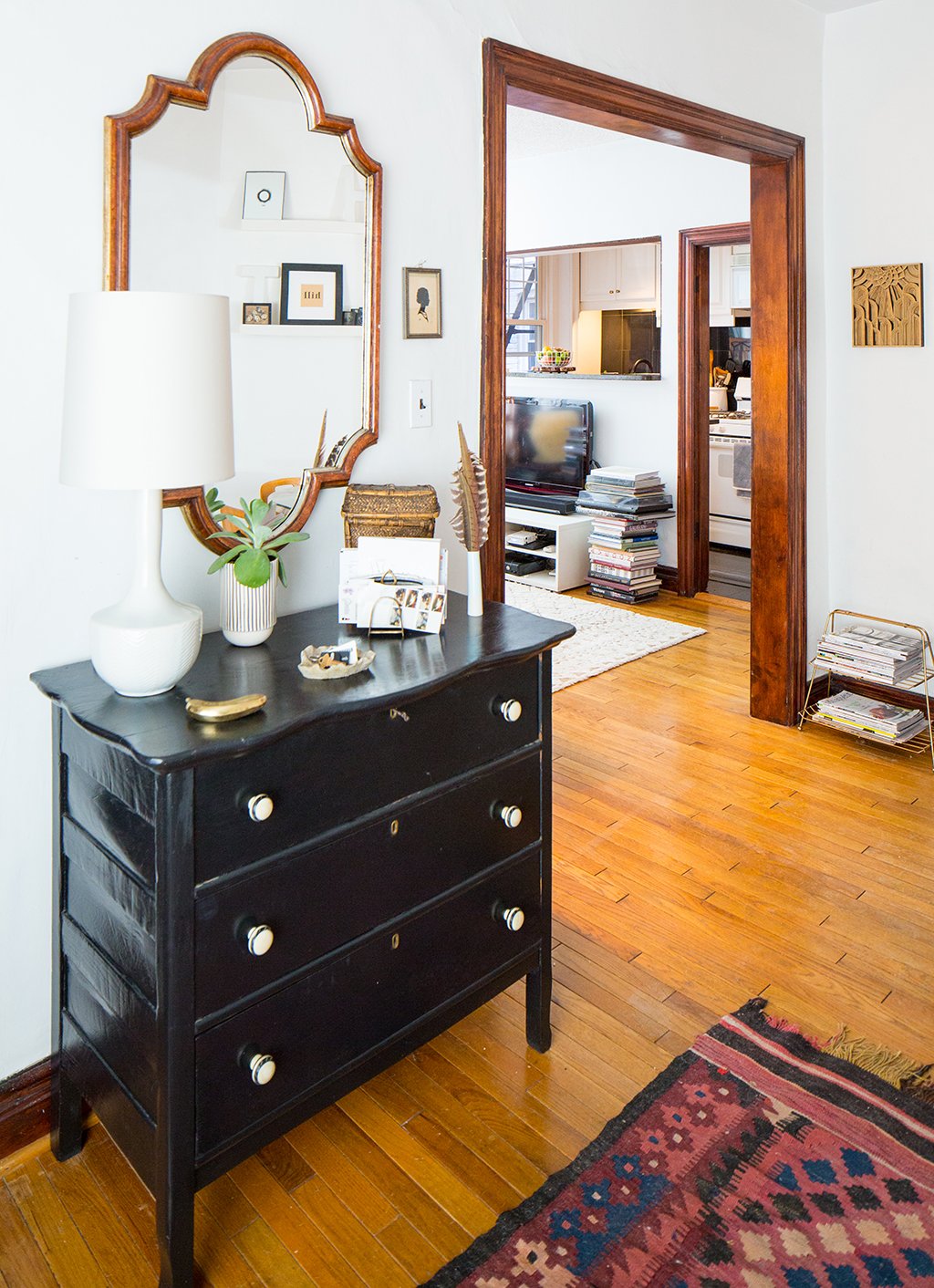
Bureau of organization: The chest of drawers serves multiple purposes: for keys, mail, even linen storage. Knowing your specific needs makes a piece like this invaluable.
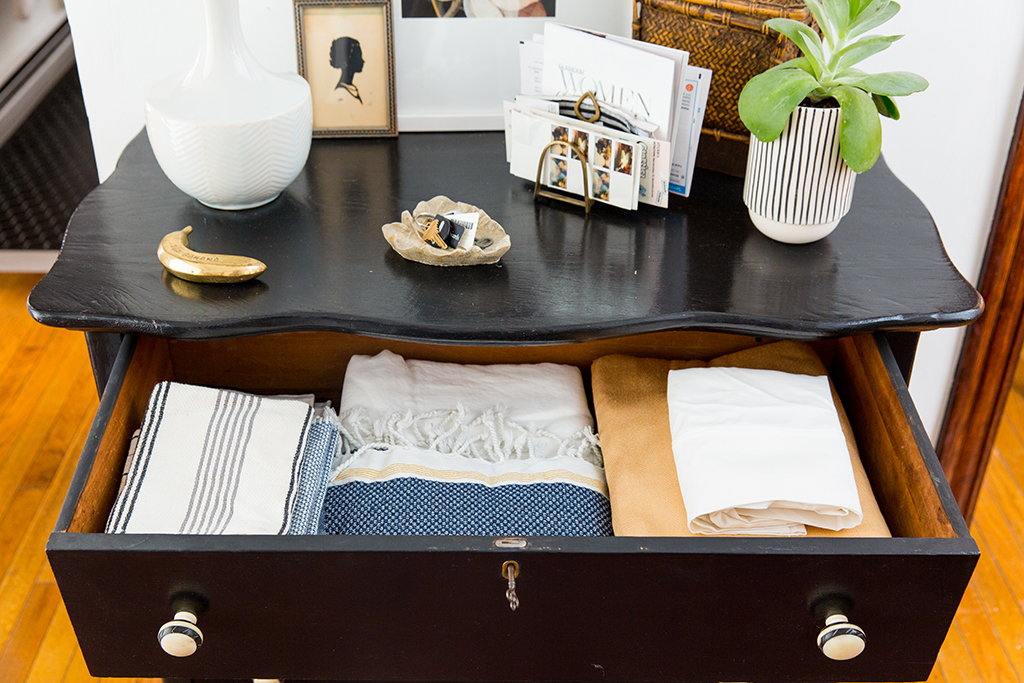
Tuck it away: Drawers in the chest could hold in-boxes for junk mail that should be shredded (for example, credit-card offers), Doland suggests, reducing the visible clutter and allowing shredding to be done later in a batch.
5. Breakfast Station
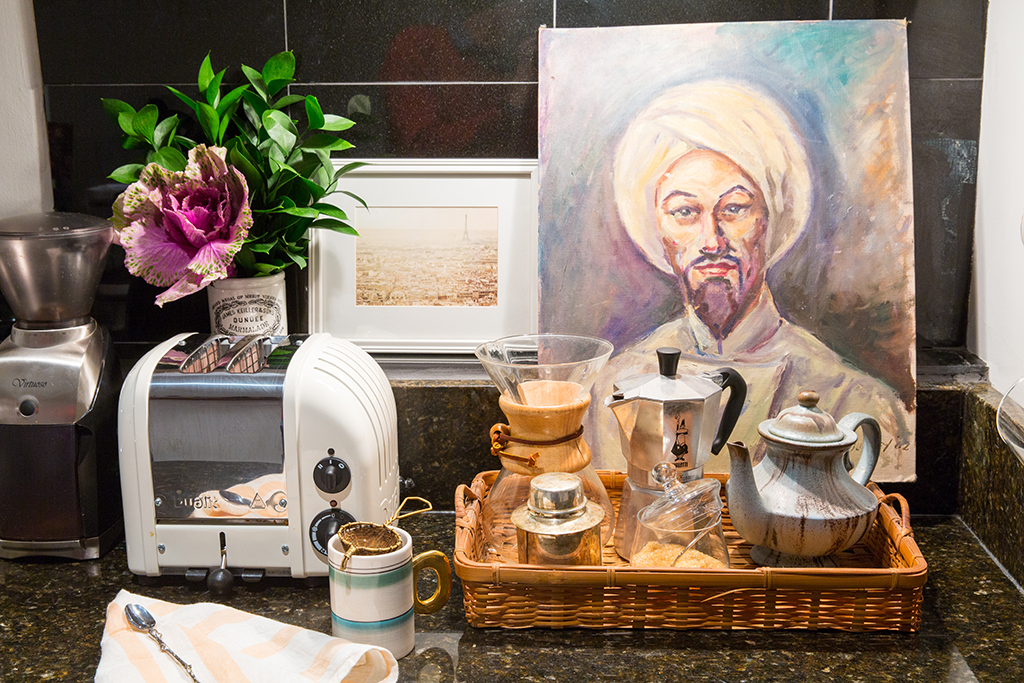
Hard line: Anything not related to breakfast (the flowers and multiple artworks) is clearly clutter, says Doland.
Like with like: Grouping appliances in the kitchen according to their purpose reduces steps and reaching. In this case, having the coffee grinder, toaster, and coffeepot in one location makes mornings simple.
6. Kitchen Pegboard
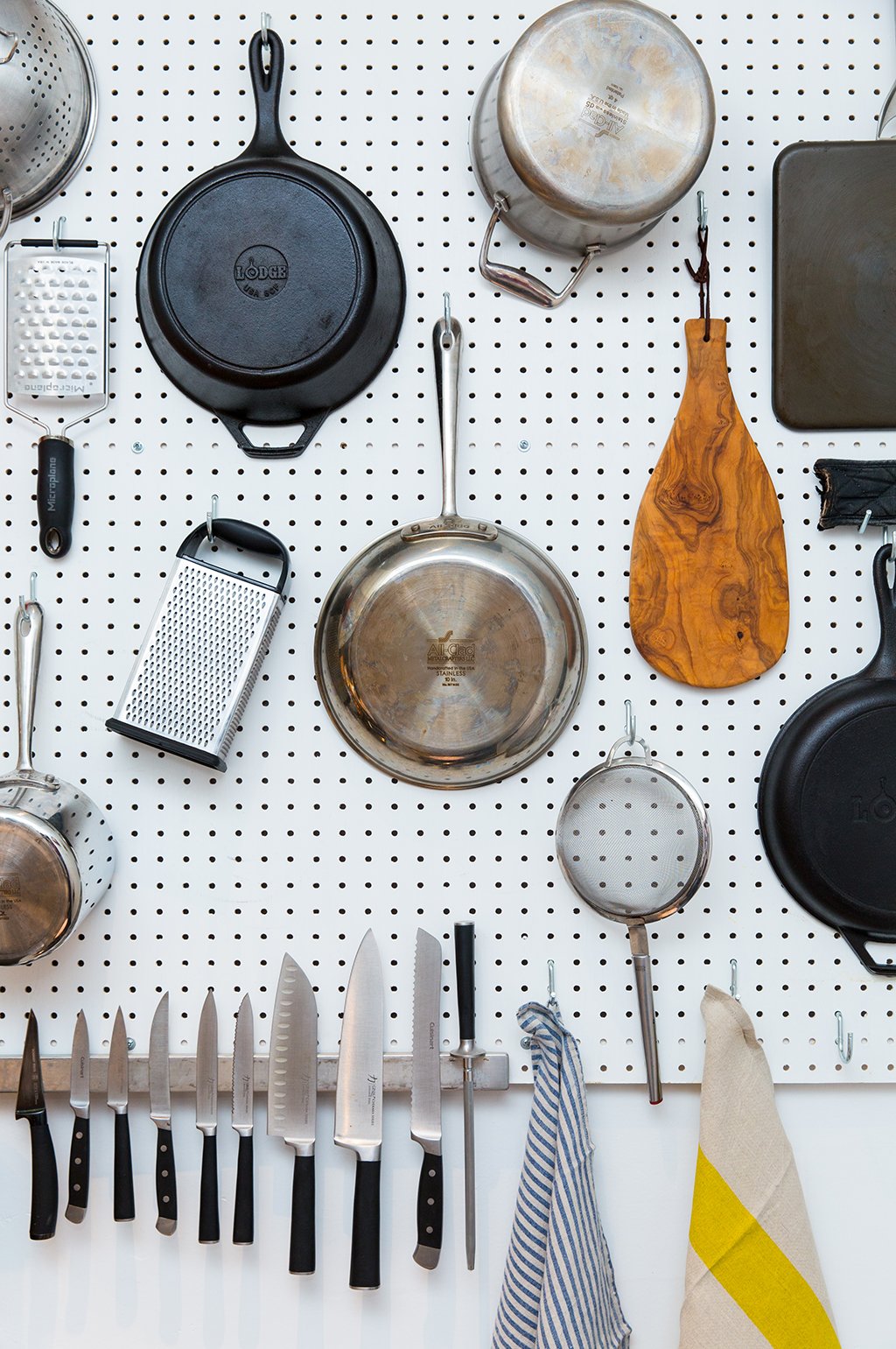
Vertical integration: Items used most often, such as knives and pans, are in the most conveniently accessed areas of the pegboard.
Make your mark: If you’re short on space, Doland suggests outlining each item in painter’s tape to make it clear where it belongs.
Design and style editor Hillary Kelly can be reached at hkelly@washingtonian.com.
This article appears in our January 2016 issue of Washingtonian.

